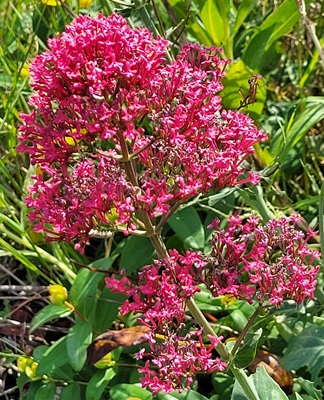Flower Properties
| Property | Value |
|---|---|
| English Name | Red Valerian |
| MainColor | Red |
| PlantType | |
| Growth Type | |
| Season | June |
| ImageUrl | Centranthus-001 |
| Photographer | DP |
| Location | |
| Human Toxicity | Non_Toxic |
Flower Details
Description
A perennial with clusters of small, fragrant, pink to red (sometimes white) flowers held on branching stems. It’s a common feature on walls, roadsides, and rocky ground, often forming colourful drifts.
Distribution
Native to the Mediterranean but naturalised widely across western and southern Europe, including much of the UK. Favors dry, sunny, well-drained soils.
Medicinal/Other Uses
Historically, the roots were used as a mild sedative and to aid digestion, though not commonly in modern herbalism. Sometimes confused with Valeriana officinalis, the true medicinal valerian.
Edibility
Young leaves can be eaten raw in salads or lightly cooked, but are bitter and not widely consumed.
Human Toxicity
Generally safe, though large amounts may cause stomach upset due to bitterness.
Pet Toxicity
Not Toxic
Active Compounds
Volatile oils, bitter principles, and flavonoids.
